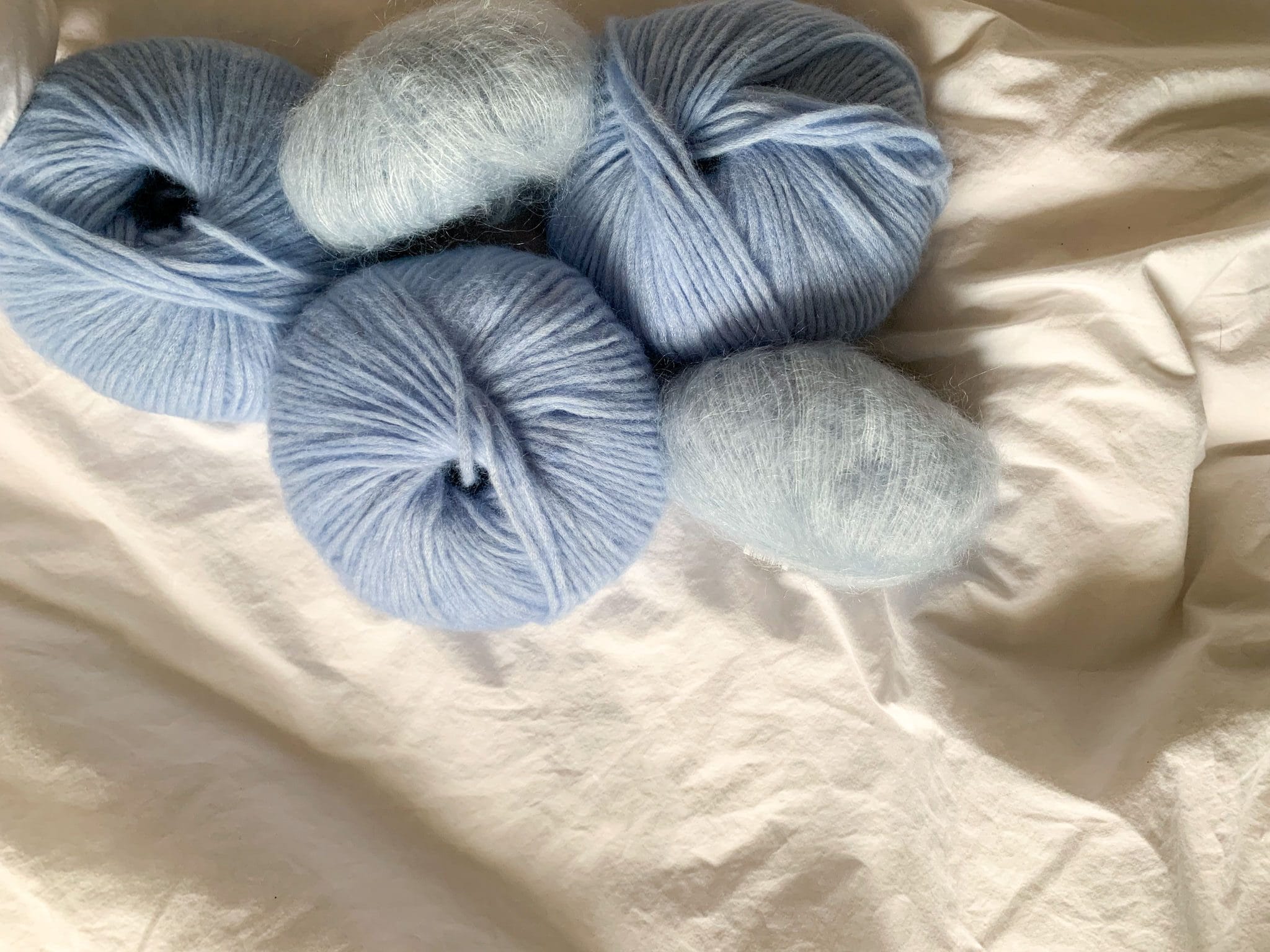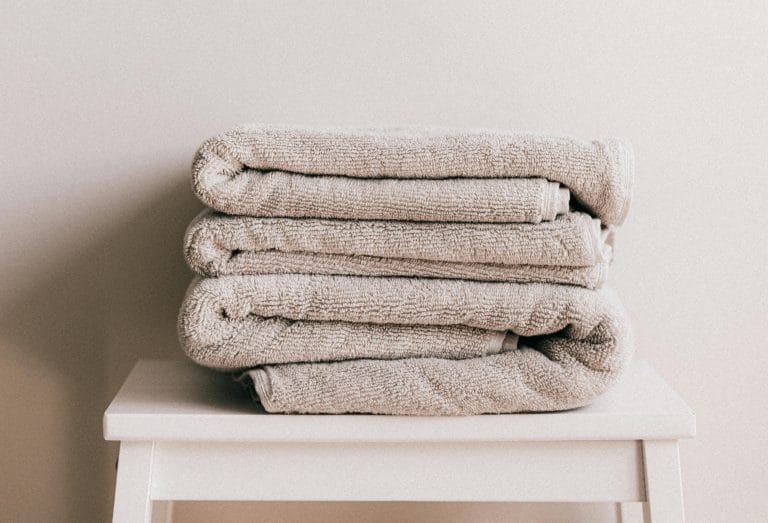Have you ever fallen head over heels for a knitting pattern only to discover the suggested yarn is either too expensive, not available in your county or is not made in the colour you want the project to be in? Or maybe you already have a huge stash (like some of us have accumulated over the years) and want to use something that you already own? Don’t worry; how to substitute yarn for knitting patterns is not only easy to learn but opens up so many possibilities and can be an exciting part of the knitting process.
Understanding Yarn Weight and Yardage to substitute yarn in knitting patterns
Knitting patterns like the saddle shoulder sweater knitting pattern “The Elva Sweater” typically specify the yarn used in the sample design, but this doesn’t mean you must use the same one. The key to successful yarn substitution starts with understanding yarn weight and yardage requirements.
How to substitute Yarn in Weight
Yarn weight is crucial as it determines the thickness of the yarn and, consequently, the gauge of your project. Yarn weights range from lace (very fine) to super bulky (very thick). When substituting, aim to match the yarn weight specified in the pattern. For example, if the pattern calls for worsted weight yarn, select another worsted weight yarn. It can be beneficial to know the different yarn weight categories, their names and what they stand for. If you want to know more about different yarn weights for knitting check out the blog article Standard Yarn Weight Guide – How to choose the correct yarn weight for your knitting project.
How to substitute yarn in length
Knitting patterns also most likely specify how many meters/yardage the original yarn has that was used for the sample and how many balls of yarn you’ll need for each size. This helps to estimate how much yarn you’ll need for your project. Remember, yardage is an estimate because different fibers and spinning styles can alter the meter-to-weight ratio. Small gauge differences can significantly affect the total yardage needed, especially in larger projects like sweaters. Designers usually add a bit extra to yardage requirements to account for these variations, making the specified yardage a good guideline when substituting.
Here is an example on how to calculate the meter/yardage of a sweater:
If the knitting pattern (for example the V-Neck Slipover Knitting Pattern “Selma Slipover”) calls for 250 g of “Avio” by Lana Grossa (50 g = 150 m) in a size Large you would divide the 250 g by 50 g to find out how many balls of yarn you’d need. In this case it would be 5. 5 times the 150 m, that the original yarn has, would be 750m. So this pattern in the size Large needs a total of 750 m of yarn.
Fiber Content for substituting yarn
Beyond weight, the fiber content of the yarn influences the drape, fit, and overall look of your knitted piece. If you want your project to resemble the sample, try to choose a yarn with similar fiber content. For example:
Alpaca vs. Wool: A sweater made of 100% alpaca will drape differently compared to one made of 100% wool, even if they share the same weight. Alpaca tends to be more drapey and less elastic than wool.
Understanding these characteristics helps you anticipate how the new yarn will behave, ensuring your project turns out as expected. If you want to learn more about which fibre has which effect on your knitted piece you can read more about it in our different fibre types in knitting blogpost.
Combining Yarns for Creative Effects and to save money
Feeling adventurous? Combine different yarns to create a unique texture or achieve a specific weight. For instance:
- Combining Fingering-Weight for DK: If the pattern calls for DK-weight yarn but you only have fingering-weight, try knitting with two strands of fingering-weight yarn held together.
- Swapping Lace and Mohair for Sport-Weight: If a pattern uses lace-weight mohair and fingering-weight yarn together, you might substitute with a single sport-weight yarn.
These combinations can add a personal touch to your project and expand your yarn options and often times make the whole knitting project much more affordable!
How to substitute yarns for knitting patterns – a Step by step example:
For you to have the easiest time when tackling the next yarn sub let’s go through an example together! Here’s how you would go about swapping yarn for a knitting pattern like the Elva Sweater:
- Check the recommended yarn. In this case the knitting pattern calls for 500 g “Woolia” from Gepard (50 g = 132 m) held together with 150 g “Kid Seta” from Gepard (25 g = 210 m) in a size Medium.
- Check what yarn weights the different types of yarn are. “Woolia” is a Medium/Worsted Weight Yarn since the yarn states a 15 to 19 sts gauge for 10 cm. “Kid Seta” is a Lace Weight Yarn since the yarn states a 20 to 30 sts gauge for 10 cm.
- Calculate the meters/yardage that the pattern requires with the calculation described above. For the Elva Sweater in a Size Medium you would need 1.320 Meters of “Woolia” and 1.260 meters of “Kid Seta”.
- Search for a Yarn you want to use with the information in mind you just acquired! The fun begins here! Be sure to roughly check the gauge of the yarns to avoid a large difference!
- Optional: If you do not want to knit with two strands of yarn look for a bulky weight yarn instead! Here is where the help of someone with more experience can help since you do not want to match the gauge of the suggested yarns but also most likely won’t find a yarn that suggests knitting it with the same needle size as the patterns gauge! Try to find a balance between the two.
Calculate the amount of yarn you need to buy to knit the sweater. For example if you choose “Sumerino” by Schulana (50 g = ca. 85 m) for the Elva Sweater pattern you would need to calculate the meters/yardage of yarn you obtained in Step 3 divided by the meters/yardage of your chosen yarn. This would be 1.320 divided by 85 – so 15.5. To be safe: always go up rather than down. So in this case you would need to buy 16 balls of yarn of “Sumerino” by Schulana (50 g = ca. 85 m).
Check your substitute yarn with a gauge swatch
No matter how closely your substitute yarn matches the original, always knit a gauge swatch. This step lets you:
- Check Your Gauge: Ensure your stitches per cm/inch match the pattern’s requirements.
- Evaluate the Yarn: See how the yarn knits up and if it suits your project.
- Adjust if needed: Make necessary adjustments before committing to the entire project.
Swatching saves time and frustration, helping you achieve the perfect fit and finish. Be sure to always block your swatch to get the actual measurements of your yarn!
What to do if your yarn alternative does not work with the gauge of the pattern
If the swatch is off by a few stitches or rows here is a few things you can try:
- Try to go up or down a needle size! This is one of the things with the biggest impact you can do! If you go up or down a needle size the stitch width and height will change and potentially be a lot closer to the original swatch! Be sure to make another gauge swatch so you can check if you still like the drape and density of your fabric.
- Choose different types of needles! This may sound crazy but it really does make a difference if you’re knitting with metal or bamboo or wooden needles! Your tension will be different and this could help if the yarn substitution you chose is just a little bit off from the original swatch.
- Hold a lace weight yarn with your other yarn. If the substitute yarn is too thin, try adding a lace weight yarn like a silk mohair or alpaca. This can already make a big difference and change the gauge swatch completely.
Seek Expert Advice
If you’re ever in doubt, don’t hesitate to ask for help. Your Local yarn shop is a fantastic resource for yarn substitution advice. The staff can provide recommendations based on their knowledge and experience, ensuring you find the best match for your project.
Conclusion
Substituting yarns can be a creative and satisfying part of knitting. By understanding yarn weight, yardage, and fiber content, and by not hesitating to combine different yarns or seek expert advice, you can confidently tackle any knitting pattern. Happy knitting!
For more knitting tips and patterns, explore our website and join our community of passionate knitters on Instagram!




